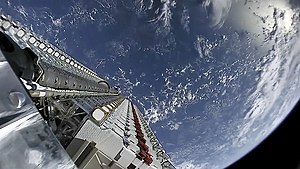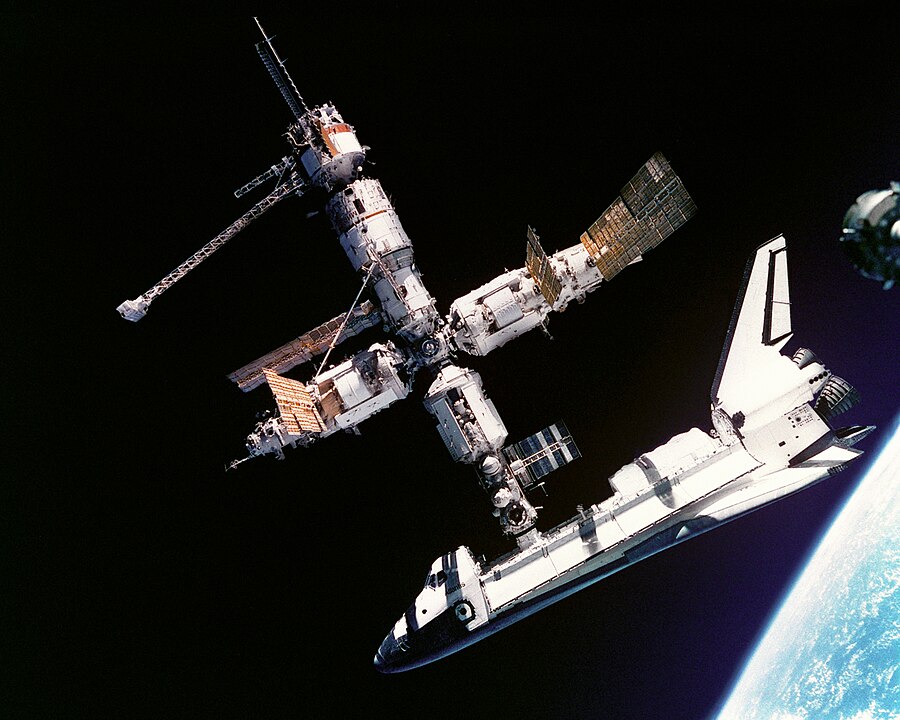The space industry, currently valued at around $630 billion, is projected to soar to $1.8 trillion by 2035. This growth not only brings technological advancements but is fuelling geopolitical conflicts among the most powerful nations. Along with this, it brings a multitude of challenges including orbital congestion, radio frequency spectrum allocation, and ethical considerations regarding equity, access to space resources, and a potential space race.
Currently, approximately 9,000+ active satellites are orbiting the Earth with a single company, SpaceX, owning a staggering 4,000 of them. This company’s plan to launch a constellation of 42,000 satellites further complicates matters, potentially leading to a space traffic jam situation.
This concentration of satellite ownership raises concerns about the equitable use of space resources as outlined in the Outer Space Treaty (OST), which states that space should be the province of all mankind. This gives rise to questions: Is space truly accessible to all? Or is it becoming the territory of a select few, reminiscent of colonial practices? The launch of these satellite constellations, while promising to provide global connectivity and other benefits, also raises questions about the fair distribution of space resources among nations.
Crowded orbits pose a significant threat of potential collisions. As more objects are placed in space, maintaining safe trajectories becomes increasingly challenging. Each satellite must carefully navigate its path to avoid colliding with others, and the risk of such collisions only grows as the number of orbiting objects increases.
This endangers current space missions and contributes to the creation of additional debris, perpetuating a cyclical process known as the Kessler Syndrome.
According to Sarah Scoles, a science journalist who writes for Codastory, “Creating more satellite infrastructure to enable more connections and capabilities on Earth could be precisely what threatens those connections and capabilities.” Contrary to constructing an extensive satellite infrastructure for improved connectivity and services, it’s paradoxical.
Adding to these concerns is the increasing pollution of outer space with debris that stays in orbit indefinitely. According to the Federation of American Scientists, there could be as many as 170 million fragments of debris currently orbiting the Earth, posing a significant threat to future space travel.

This debris, which includes defunct satellites, rocket stages, and fragments from past collisions, in low-Earth orbit presents challenges in tracking and managing these objects, which can impede upcoming space missions.
The good thing is that no two active spacecraft collided with each other putting us at ease due to the competence of space traffic management systems, yet! However, there’s a slight issue with that. The current US alert system is not capable of monitoring the space traffic for the whole world.
The director of Secure World Foundation, Victoria Samson claims the US alert system to be minimal and is nowhere near comprehensive enough to tackle all the traffic. She realizes the need for having more formal coordination and two-party discussions rather than 11th-hour chaos.
To understand the gravity of the situation let’s see a real-world example. In 2019, SpaceX’s one of the Starlink satellites had a 1 in a 1000 chance of colliding with the European Space Agency’s satellite. 29 warnings were issued to SpaceX, though, without any response. In the end, the European Space Agency changed the course of its satellite. Investigation revealed a bug in the SpaceX system at that time which was why they weren’t able to respond.
This incident further strengthens the claims made by Victoria Samson.
Why should we be concerned about this?
OST emphasizes that all space activities should benefit all of humanity. The advancements we enjoy today like GPS technology for location tracking and communication systems for air and sea travel, are made possible by satellites.
If something were to go wrong in space, the consequences could be dire. Just like we all know what happened on 19th July with the Windows-operated systems and Crowdstrike. These incidents show that events in space can affect our everyday lives, either directly or indirectly.
With the rise of commercialisation in space, private companies are now participating in exploration, previously dominated solely by government agencies. Drafted in the 1960s when space exploration was primarily scientific, OST now seems outdated and lacks clear regulations for private space companies and commercial activities in space.
Under the OST, if a private space company violates any laws, the home nation is held responsible. The problem is that the United Nations has no means of enforcing these laws. Consider a hypothetical example of a private space company from a powerful nation violating space laws. Given the UN’s historical struggles to enforce actions against superpowers, how would it stop or hold them accountable for any damages?
The asteroid mining industry, valued at over $900 million in 2022, is expected to reach $4 billion by 2030 and has the potential to inject trillions of dollars into the global economy. As Chad Anderson, founder of investment firm Space Capital, explains, “The space economy is much broader than just rockets and satellite hardware. It is the invisible backbone that powers our global economy.”
The problem is that whoever develops feasible technology first will likely monopolise the industry and its resources. Most likely the home country stands to benefit most from this technology, widening the inequality gap between those who have access to space resources and those who do not.
The OST helped ease tensions between the US and the Soviet Union, and it was hoped it could do the same for US-China relations. However, this hasn’t been the case. Like other superpower spacefaring nations, China’s space program is rooted in its military and ballistic missile program. In contrast, the US separated its space program from military jurisdiction with the formation of NASA in 1958. Nonetheless, the US remains suspicious that China’s civilian space program is merely a cover to enhance its military capabilities.
The US imposed strict sanctions on China on the sharing of information and components. Despite these restrictions, China’s space program continued to advance rapidly. Notable achievements include six domestic launch sites, successful lunar and Mars rover missions, a constellation of satellites for remote sensing and intelligence, their own permanently crewed space station Tiangong, and a roadmap for a lunar research station.
Whether this will be a competition or collaboration depends on how these two superpowers approach the issue. Either way, it will increase the pace of innovation in both countries. China has already achieved so much without cooperation and will keep moving forward with or without anyone’s help. Furthermore, history suggests that technological feats are achieved through collaboration.

John Logsdon, professor emeritus of George Washington University and former Space Policy Institute director, believes that competition and collaboration will have positive impacts. He notes that the space race got the US to the moon and collaboration with their sworn enemy, Russia, helped build the International Space Station along with 13 other nations. Logsdon rejects the notion of a race for domination and believes that competition can still help.
The major problem with collaboration is that the Chinese are not very transparent about their methods and ideas. The 14th head of NASA, Bill Nelson, claims he wants the US to cooperate with China in space, but secrecy and non-transparency are major hurdles. Nelson states, “The Chinese civilian space program is, in reality, their military space program. That’s why I think we are going into a space race with China.” He also believes, “Leadership in space is leadership transparently for all nations to join you.”
But is there a way to still collaborate? Nelson suggests that if they receive assurances from their counterparts about transparency, they are willing to consider it. There are ways around the Wolf Amendment, as it only restricts NASA and NASA-funded projects from being shared with the Chinese.
Scientific endeavors not funded by NASA can still collaborate. Moreover, the Wolf Amendment restricts bilateral relations, not multilateral ones. A collaboration of the US, Russia, and China can still work, but concerns about working with two authoritarian countries are significant.
Many experts believe that collaboration with China will pave the road to greater cosmic achievements. Because one way or another, China is going to continue advancing, and those who lag might lose their chance to be part of something greater. Jim Head, a planetary scientist, concludes, “The solar system is such a big place. If we’re all duplicating everything individually, that is just stupid. So collaboration, cooperation, coordination — I think that’s the way to go.”
Following the steps of superpowers, India is catching up on their space program. The success of the Chandrayaan-3 mission, which involved a soft landing of a robot on the moon’s South polar region, made India the 4th country to achieve this feat after the US, Russia, and China.
To further enhance their space sector, the Indian government has introduced new policies to allow private companies to participate and attract foreign direct investments. The Indian Space Research Organisation (ISRO) opened doors for collaboration with the private sector to improve the country’s space capabilities.
India planned to invest $3 billion to reduce its reliance on foreign satellites, with a focus on strengthening its military space program following tensions in the Ladakh region with China.
In response to China’s anti-satellite missile test in 2019, India established the Defence Space Agency and conducted its own anti-satellite weapon test, showcasing its growing dominance in orbit. Additionally, India aims to establish a navigation system comprising 26 satellites, with 7 already in orbit. To enhance communication capabilities for its military, India is aiming to send multiple communication satellites in the coming years.
Despite facing funding and resource constraints, India’s space program continues to ascend to new heights. M. Matheswaran, a retired Indian Air Force air marshal, believes that India will eventually close the gap with other leading spacefaring nations, but acknowledges that catching up with China’s current position will take time. However, the militarisation of India’s space programme raises concerns. The increasing focus on military applications in space may lead to an arms race in orbit, further complicating the already tense geopolitical landscape.
The ethical considerations surrounding space utilisation are complex and multifaceted. While the launch of satellite constellations aims to provide global connectivity and other benefits, it raises critical questions about the fair and sustainable use of space resources. The concentration of ownership and control over these assets by a few nations or private entities could lead to a new form of “space colonialism,” where the benefits of space are not shared equitably among all nations.
Additionally, the environmental impact of space debris and the potential for collisions raises questions about the responsibility of space-faring nations and companies to mitigate these risks and ensure the long-term sustainability of space activities.
At the end of the day, it is of utmost importance that any actions taken or laws made must ensure the inclusion of all stakeholders and must be done for the benefit of all mankind. Experts, policymakers, scientists, lawyers, and ethicists should sit together to discuss the best possible ways to ensure that space remains a province for all mankind.
References:
- https://nanoavionics.com/blog/how-many-satellites-are-in-space/
- https://ace-usa.org/blog/foreign-policy-region/space-oceans-and-polar-regions/failures-and-successes-of-the-outer-space-treaty/
- https://www.wired.com/story/two-nations-horrible-accident-urgent-need-laws-of-space-lachs-moot/
- https://www.cbc.ca/arts/operation-morning-light-podcast-soviet-satellite-exploded-traditional-dene-land-1.6650994
- https://www.businessinsider.com/flashback-soviet-satellite-exploded-scattering-nuclear-debris-over-canada-2023-12
- https://www.jaxa.jp/library/space_law/chapter_3/3-2-2-1_e.html
- https://www.codastory.com/waronscience/satellite-debris-crash-climate-change/
- https://ace-usa.org/blog/foreign-policy-region/space-oceans-and-polar-regions/failures-and-successes-of-the-outer-space-treaty/
- https://djilp.org/does-the-u-s-space-force-violate-the-outer-space-treaty/
- https://www.unoosa.org/oosa/en/ourwork/spacelaw/treaties/introouterspacetreaty.html
- https://www.mckinsey.com/industries/aerospace-and-defense/our-insights/space-the-1-point-8-trillion-dollar-opportunity-for-global-economic-growth
- https://www.scientificamerican.com/article/can-the-u-s-and-china-cooperate-in-space/
- https://www.defensenews.com/space/2024/03/06/india-plans-to-spend-3-billion-on-space-can-it-catch-up-to-china/
More from the author: The Hidden Culprit of Winter Smog- Temperature Inversion

Adnan Baig is a space science graduate who also served as a student research assistant at the Leibniz Institute of Astrophysics, Potsdam, Germany. He has co-authored several international research publications. Adnan is interested in space research, astrophysics, environmental science, nature photography, writing, reading and watching movies and anime.

